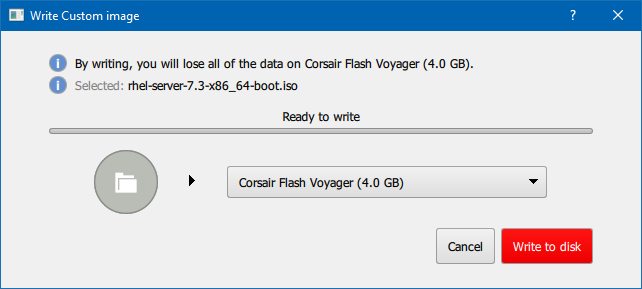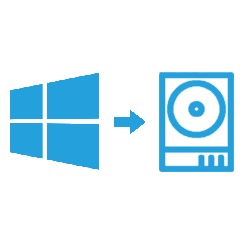

Repeat this procedure to add any additional boot images. You can see that the image name that you entered in the Image Metadata screen is used to identify the boot image in the console. You can see in the following figure that the boot image is now available for management and for PXE clients to download. The boot image is copied into the image store once you proceed past the Summary screen. The Image Metadata screen allows you to give the boot image a name and a description.
#CREATE A BOOTABLE IMAGE FOR SERVER DEPLOYMENT ON MAC WINDOWS 7#
The boot image on the Windows 7 media kit has been selected in our example. This will open the Add Image Wizard, shown in the following figure: Right-click on Boot Images and selectĪdd Boot Image….

Navigate to Windows Deployment Servicesīoot Images. You will manage your images in the WDS console. If you use the Boot.wim from the version of Windows Vista that does not contain SP1, multicasting will not work correctly.Īs you can see in the above statement, selecting an old boot image might be problematic in some scenarios.

Please consider the following scenario (this is selected from a knowledge base article):ĭo not use the Boot.wim from the Windows Vista media unless your version of Windows Vista has SP1 integrated into the DVD. For example, you should not try to use a boot image from a Windows Vista media kit to deploy Windows 7. We recommend that you always use the latest version of Windows PE. You will have to use 32-bit boot images for them.īoot images contain Windows PE. Some legacy hardware will have 32-bit processors. But you may find that you have to deploy some 32-bit installations because of legacy hardware or application/driver compatibility issues. You might aim to deploy 64-bit editions of Windows 7. \Source folder in the Windows 7 installation media. You can load your DVD to copy the boot.wim file from the The system will now boot to a command prompt and display C:> You now have a bootable USB drive. Select the USB storage device to boot to the USB Flash Drive.
Restart the system and at the Dell logo, pressThe easiest place to find a boot image is in your Windows 7 media kit. This will make the USB Flash Drive bootable. You will need to create a starting point by adding a boot image to your WDS server.


 0 kommentar(er)
0 kommentar(er)
